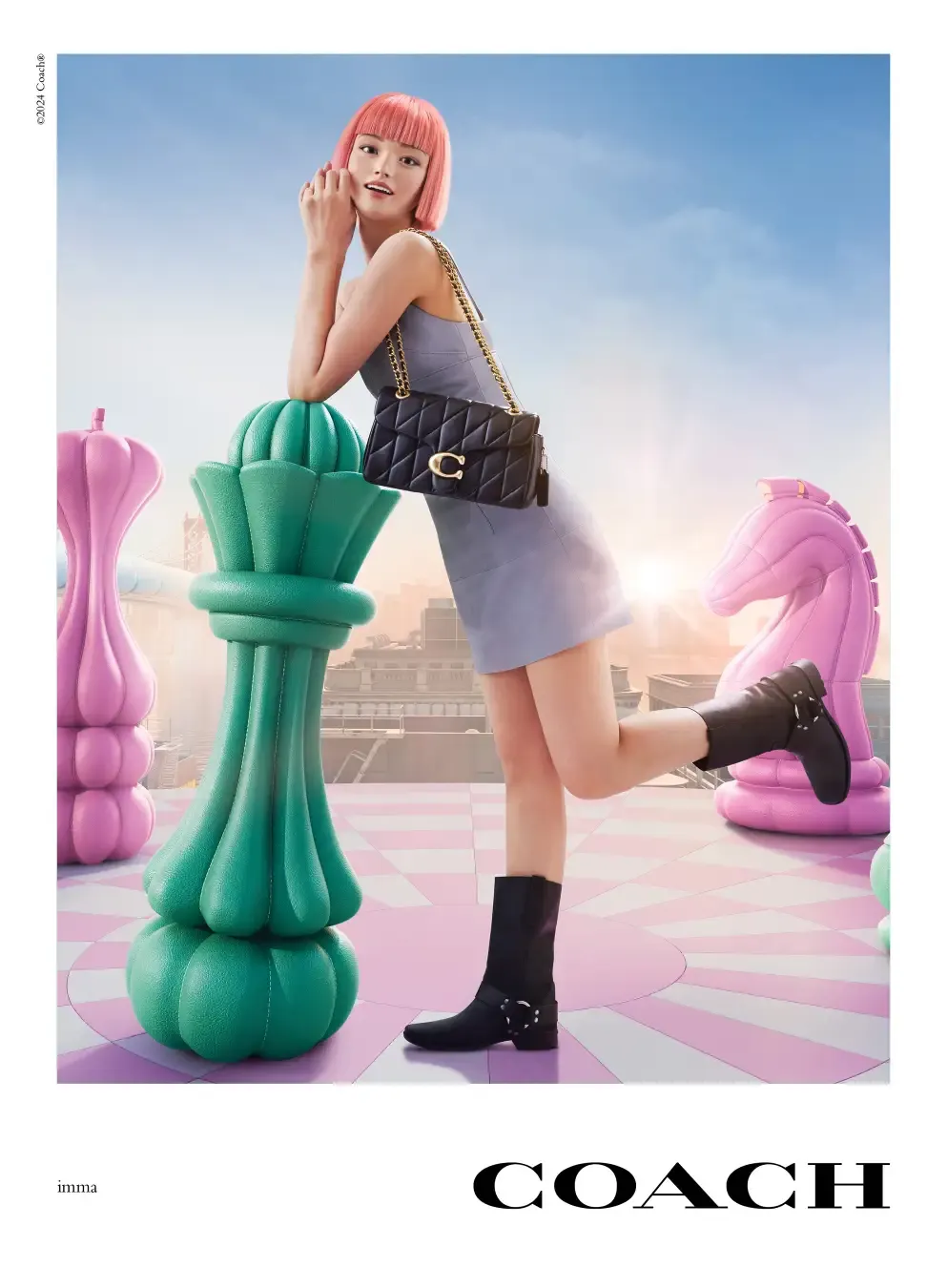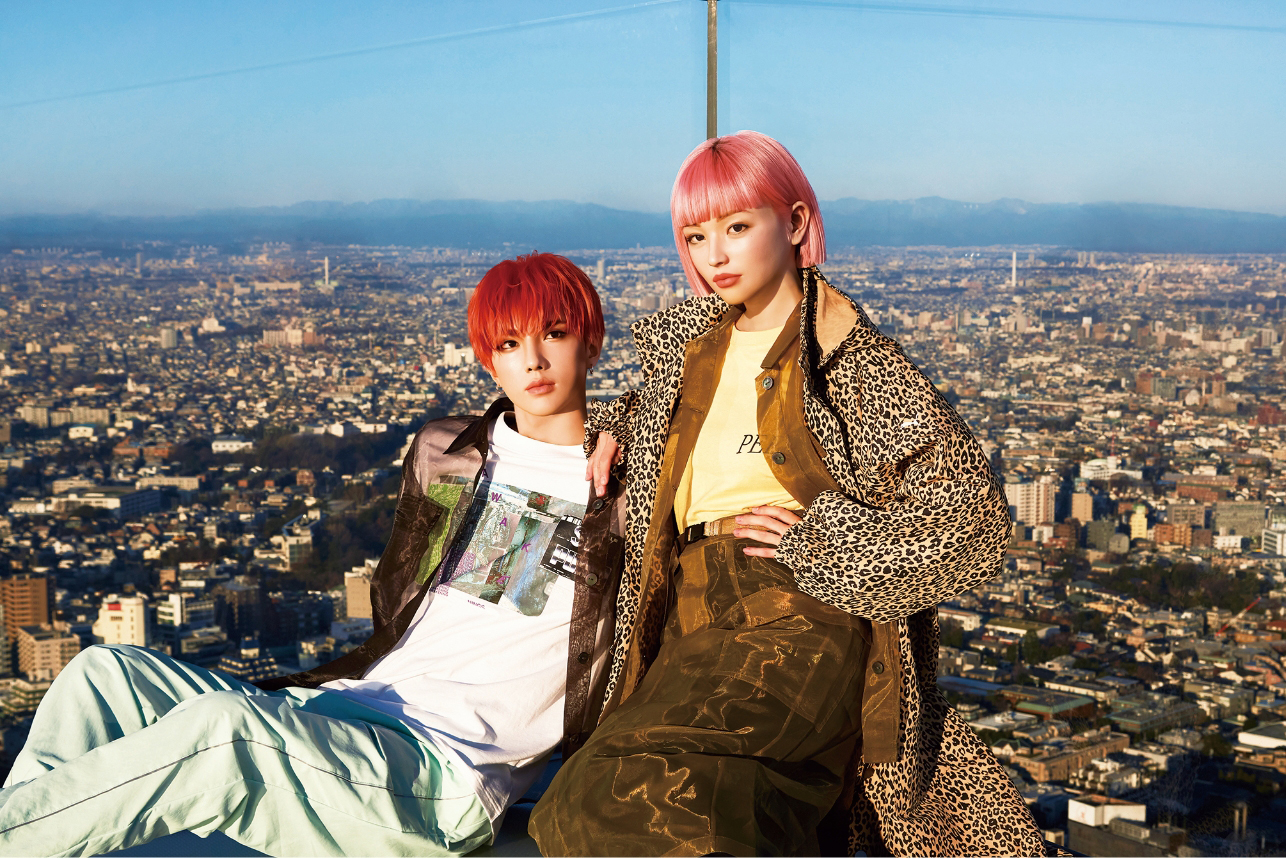Who is imma? The Japan-born virtual human who rose to fame through collaborations with Coach and PUMA — and will she replace real models?

The Japan-born virtual human imma — instantly recognizable by her pink bob — is often described as the country's first full-fledged virtual model. Created by Tokyo-based Aww Inc., she debuted in 2018 and has since headlined global campaigns that span fashion, finance, and even real-world retail installations. Her fan base, initially concentrated in North and South America, has expanded to India, Southeast Asia, and Oceania, and she now has over one million social followers, primarily Gen Z (with an almost even gender split). Her appearances go well beyond the "fashion insider" circuit — among them the Tokyo 2020 Paralympics closing ceremony, the cover of Harper's BAZAAR Taiwan, and advertising for Nomura Holdings' New NISA.

In 2024, imma appeared alongside human ambassadors such as Kōki in COACH's global campaign "Find Your Courage," performing a narrative that asks, "What is reality?" COACH's choice to place a virtual human on equal footing with human faces sought to reframe identity and "the real." This was not about replacing people; it expanded the scope of the story, casting the virtual not as a stand-in, but as an actor that extends the brand's voice.

imma's track record isn't limited to luxury. In 2019–2020, she fronted visuals for PUMA × SLY, driving a Tokyo-street-inflected collaboration. Across both the first and second drops, the creative put imma at the center, proposing a new triangle — sports × youth fashion × virtual — even at Japan's more mass-market price tiers.

And in 2020, IKEA Harajuku unveiled an installation that brought "imma's room" to the store's street-level windows — layering LEDs over a physical set to make it feel as if the virtual model lives in the real world.
Who owns what? imma's essence: a model you can turn into your own IP
For brands, the biggest advantage of virtual humans is the stability of image rights and persona. Schedule, tone of voice, speaking style, worldview — everything can be designed and governed as IP, then deployed 24/7, in multiple languages, across multiple locations. In 2024, Aww announced a partnership with NVIDIA to upgrade an interactive "AI imma," moving toward an "autopilot" mode that can extend into events, clienteling, and in-game appearances — any two-way, omnichannel touchpoint. Aww also disclosed about US$6 million in seed funding in 2024, clarifying a mid- to long-term plan to build a virtual-human IP industry.

This structure — a model you can "own" — matters for brand equity. Instead of a one-off casting, the model becomes a long-term asset you can carry consistently across social, advertising, retail, the metaverse, and even games or voice assistants. The market tailwinds help, too: according to Grand View Research, the virtual influencer/human market is estimated at US$6B in 2024, with projections of ~40% CAGR through 2030.
Where virtual models win — and where they don't
Where virtual wins:
- Large, multi-country, multi-language campaigns where simultaneity and consistency are critical.
- Visualizing a brand world beyond physical constraints (e.g., COACH's "what is reality?" narrative).
- Risk management and operational stability (predictable persona/communications).
- Always-on clienteling and live commerce (China already shows cases where AI avatars outperform human streamers in sales).
Where humans remain essential:
- The atmosphere of a runway and the improvisation of a live set.
- Material credibility — craft, skin texture, micro-detail (beauty still favors the real).
- Era-defining charisma — the cultural weight of icons grounded in history and society is not easily synthesized.
- As a result, top brands are converging on portfolio design: human spontaneity and virtual control, allocated case by case.
Transparency and regulation
Transparency is non-negotiable. The U.S. FTC Endorsement Guides require clear disclosure of paid relationships, and misleading synthetic/manipulated content can trigger enforcement. The EU AI Act is moving toward labeling obligations for synthetic content, and major platforms are introducing AI-generated content labels. Not hiding the "virtual" can, in fact, build trust as a brand asset.
Will virtual models take over real models?
Short answer: No — though their share will grow.
In domains that require "multi-touchpoint duplication of the same persona" — static images, pre-rendered video, multi-country launches, in-game presence, 24/7 clienteling and live commerce — the virtual share will keep rising, because consistency, speed, and legal predictability drive decisions. Conversely, runway energy, on-set serendipity, micro-texture realism, and the cultural gravity of living icons will continue to favor humans. The optimal future is not replacement but recomposition: an art direction that mixes human spontaneity and virtual governance for each brief.
What brands can learn
- Plan for longevity, not one-off "consumption."
- Aim only for collaborations where the brand's goals overlap with imma's identity, rather than chasing views.
- Make the symbols read in a single frame.
- Ensure brand codes × imma's iconography are legible at a glance (COACH's visual language is a good model).
- Stage time and place. Build a rhythm from tease → launch → sustained touchpoints to harvest UGC. IKEA Harajuku turned the storefront into a narrative stage and generated buzz.
- Run the persona on two layers. Keep the core "sense of self" curated by humans, while letting AI handle responsive scale and extension.
Want to discuss your next campaign?
Talk directly with NextGens about brand strategy, creative localization, or Japan market entry.
💬 Chat on WhatsApp